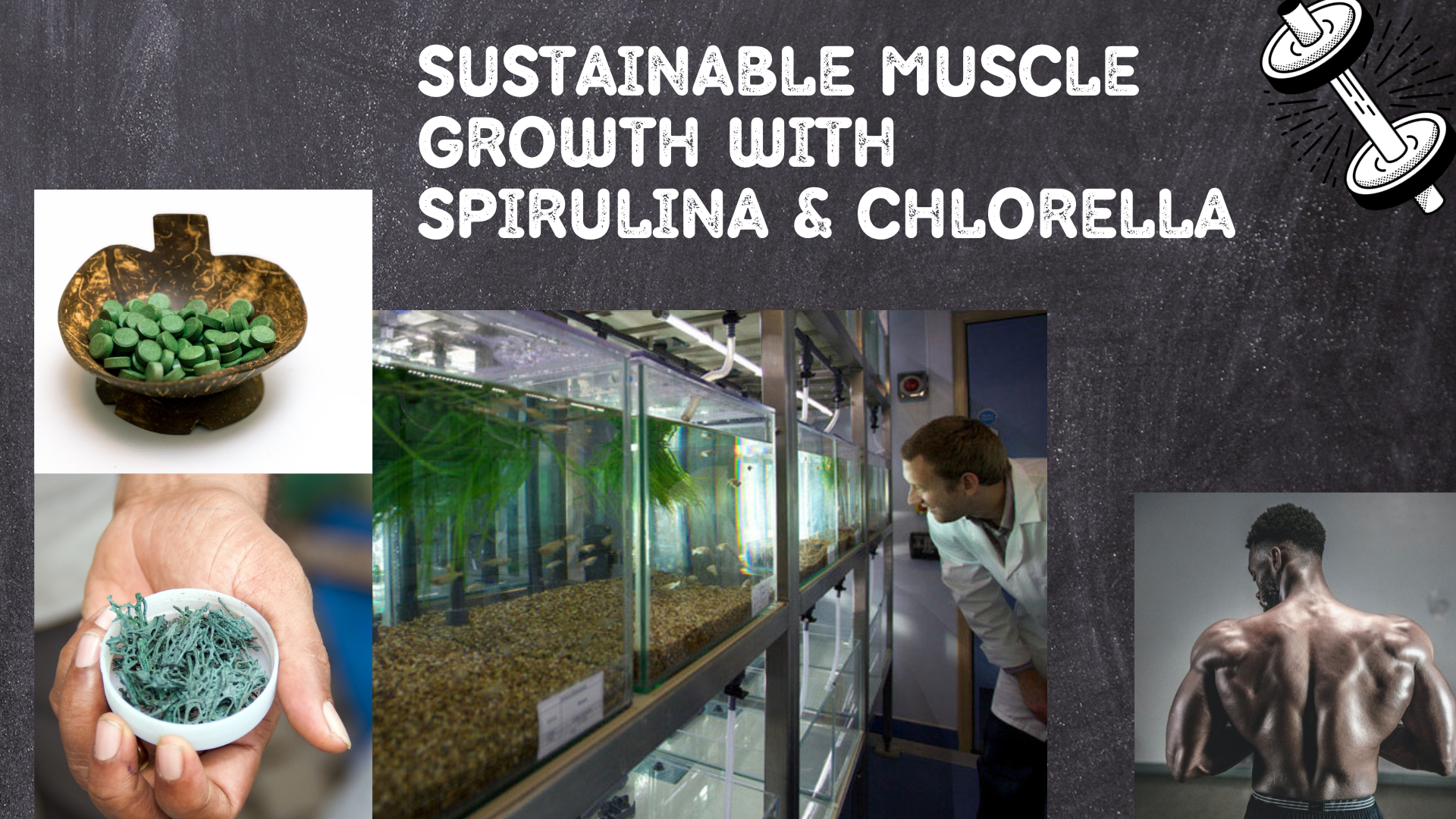Summary
A study conducted by the University of Exeter explored environmentally friendly alternatives to animal-derived proteins, focusing on the muscle protein synthesis stimulation of algae, particularly spirulina and chlorella. The research, involving a randomized trial with thirty-six participants, found that protein ingestion from spirulina or chlorella demonstrated robust effects on myofibrillar protein synthesis, comparable to a high-quality nonanimal-derived protein source (fungal-derived mycoprotein).

Muscle Protein Synthesis
Foods abundant in protein and essential amino acids play a pivotal role in stimulating muscle protein synthesis. This process is quantifiable in the laboratory by assessing the incorporation of labelled amino acids into muscle tissue proteins, providing insights into the synthesis rate over time.
Animal-Derived Proteins
Proteins sourced from animals demonstrate robust efficacy in stimulating both resting and post-exercise muscle protein synthesis. Despite their effectiveness, the ethical and environmental concerns associated with animal-based protein production have prompted a search for alternative, environmentally friendly options.
Algae as a Sustainable Alternative
Addressing ethical and environmental concerns, algae, particularly spirulina and chlorella, emerge as promising alternatives to traditional animal-derived proteins. Cultivated under controlled conditions, these commercially available algae not only offer high doses of micronutrients but also boast rich protein content.
Research Focus on Spirulina and Chlorella
While spirulina and chlorella present environmentally friendly alternatives, their capacity to stimulate myofibrillar protein synthesis in humans remains a subject of inquiry. Researchers from the University of Exeter sought to fill this knowledge gap by evaluating the impact of ingesting spirulina and chlorella in comparison to a well-established nonanimal-derived protein source (fungal-derived mycoprotein). The assessment encompassed blood amino acid concentrations, as well as resting and post-exercise myofibrillar protein synthesis rates.
Study Participants and Design
In a randomized, double-blind trial, thirty-six healthy young adults actively participated. The trial aimed to assess the impact of protein ingestion from different sources on blood amino acid concentrations and myofibrillar protein synthesis rates.
Post-Exercise Protein Ingestion
After engaging in a session of one-legged resistance leg exercise, participants consumed a drink containing 25 grams of protein. The protein sources included fungal-derived mycoprotein, spirulina, or chlorella.
Also Read: Unlocking the Potential of Artificial DNA “Breakthrough in Genetic Transcription” – Know More (kmore.info)
Sampling and Assessment
Throughout a four-hour post-feeding and post-exercise period, blood and skeletal muscle samples were collected. The assessment focused on examining blood amino acid concentrations and myofibrillar protein synthesis rates in both rested and exercised tissue.
Amino Acid Concentrations and Protein Synthesis
The results revealed that protein ingestion increased blood amino acid concentrations. Spirulina exhibited the most rapid and higher peak responses compared to mycoprotein and chlorella. Additionally, protein ingestion elevated myofibrillar protein synthesis rates in rested and exercised tissue.
Comparative Analysis
This groundbreaking study is the first of its kind to demonstrate that the ingestion of spirulina or chlorella robustly stimulates myofibrillar protein synthesis. Importantly, this stimulation occurs in both resting and exercised muscle tissue and is comparable in magnitude to the effects observed with a high-quality nonanimal-derived counterpart, mycoprotein.
Journal Link: https://www.sciencedirect.com/science/article/pii/S0022316623725960?via%3Dihub
FAQs
Q1: How do foods rich in protein stimulate muscle protein synthesis?
A1: Protein-rich foods stimulate muscle protein synthesis by incorporating labelled amino acids into muscle tissue proteins, quantifiable in the laboratory.
Q2: Why are Spirulina and Chlorella considered sustainable alternatives to animal-derived proteins?
A2: Spirulina and Chlorella, are environmentally friendly alternatives, cultivated under controlled conditions and offering high micronutrient and protein content.
Q3: Difference between Spirulina and Chlorella
A3: Chlorella and spirulina are tiny blue-green algae found in freshwater and saltwater environments, respectively. These microorganisms rank among the most nutritious superfoods globally, rich in protein, B vitamins, and chlorophyll. With protein content reaching up to 60 to 70%, these offer all essential amino acids in a highly digestible form. Their benefits include reducing the proliferation of specific tumours, lowering cholesterol levels, and detoxifying the body from substances like dioxin.
